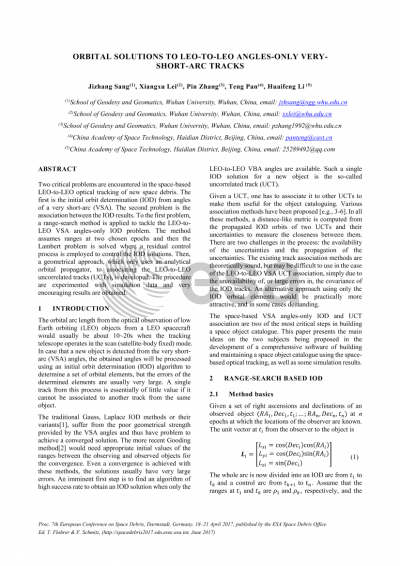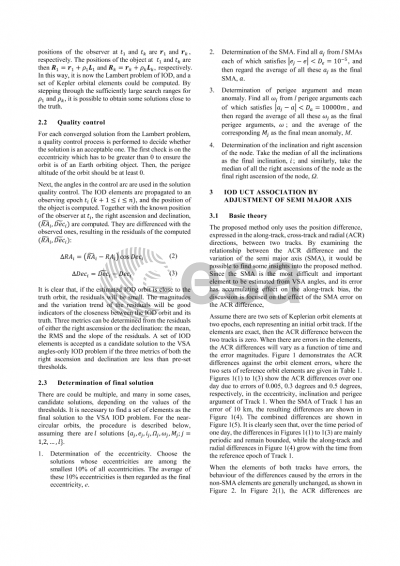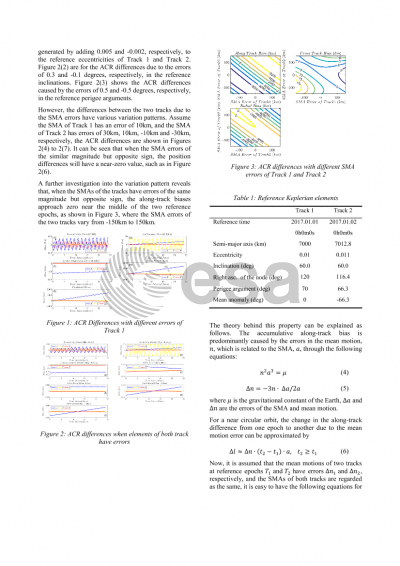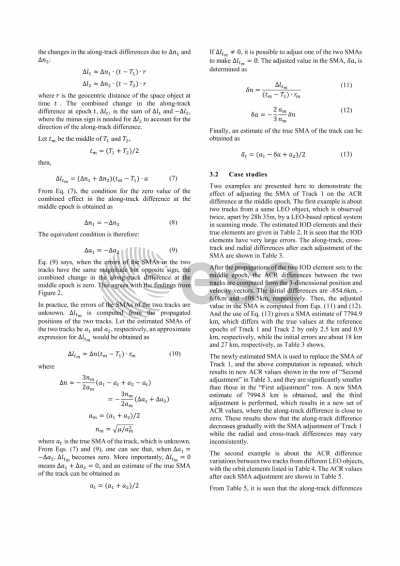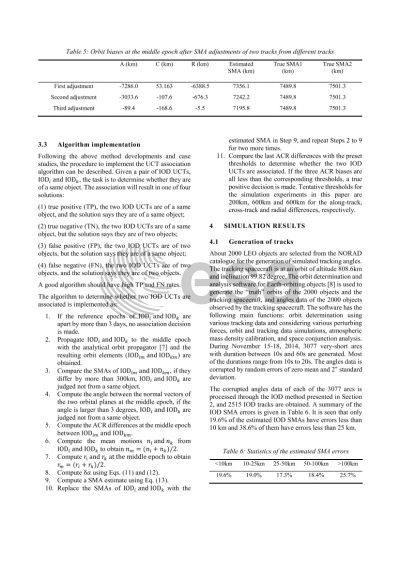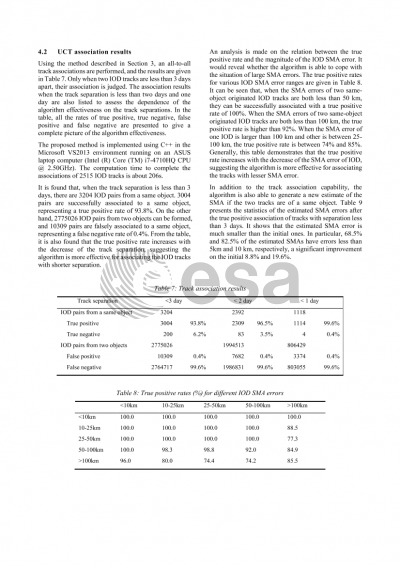Document details

Abstract
Two critical problems are encountered in the space-based LEO-to-LEO optical tracking of space debris. The first is the initial orbit determination (IOD) from angles of a very short-arc (VSA), which usually has only a track length between 10~60s because of the high relative speed between tracking spacecraft and observed debris. The second problem is the association between the IOD results.
To the first problem, a numerical method is proposed to tackle the LEO-to-LEO VSA angles-only IOD problem. The method assumes ranges at two chosen epochs and then the Lambert problem is solved. The obtained IOD elements are then used to compute the angles at other epochs. The quality of the IOD solution is assessed using the RMS value of the residuals between the computed and observed angles, and the slope of linear fitting function of the residuals. Through the range search, there would be numerous IOD solutions passing through the quality control. Therefore, a final step in this method is to determine a set of elements from numerous IOD solutions.
To the second problem, a geometrical approach to associating the LEO-to-LEO uncorrelated tracks (UCTs) is developed. This approach uses an analytical orbital propagator to propagate two UCTs to the middle of the time interval, and then adjust the semi-major axis (SMA) of one UCT according to a simplified relationship between the along track bias and the error of the SMA. When the along track bias at the middle epoch is minimised, the average of the SMAs of the unadjusted and adjusted UCTs should approach to the true SMA of the orbit if the UCTs are of a same object.
Two simulations are designed for the IOD method. In the first simulation, the tracking spacecraft is at a sun-synchronous near-circular orbit with altitude 808km and inclination 99.8°. The telescope pointing is fixed normal to the orbital plane, and the field of view is assumed 6°×6°. Using the NORAD TLE catalogue, 503 LEO track of arc length between 10s and 60s are obtained on 15-16/11/2014. The IOD of 503 tracks are processed with the proposed numerical methods The IOD success rate is 97% and 25% of SMA errors are less than 10km. In the second simulation experiment, the tracking spacecraft is at an inclined near-circular orbit with altitude 616km and inclination 64.6°. 3165 LEO tracks of arc-length longer than 10s (without the sun-illumination condition, because only the IOD is concerned) are obtained on 15-16/11/2014. The IOD success rate is 100%, and 27% of the IOD semi-major axes have errors less than 10km.
In the assessment of the geometric VSA track association approach, the metric is the true positive rate, which means if two UCTs are originated from a same object and the method successfully associate them to the object. Preliminary simulations show that, the true positive rate is about 85% for LEO near-circular UCT associations. Compared to the traditional method, the most significant advantage of this method is that it needs neither the prior variance-covariance information nor its troublesome propagation. Therefore, it is much easier to implement, while the success rate of association is reasonable. From the simulation studies, this new geometric track association method is promising and worthy of further research.
Preview
